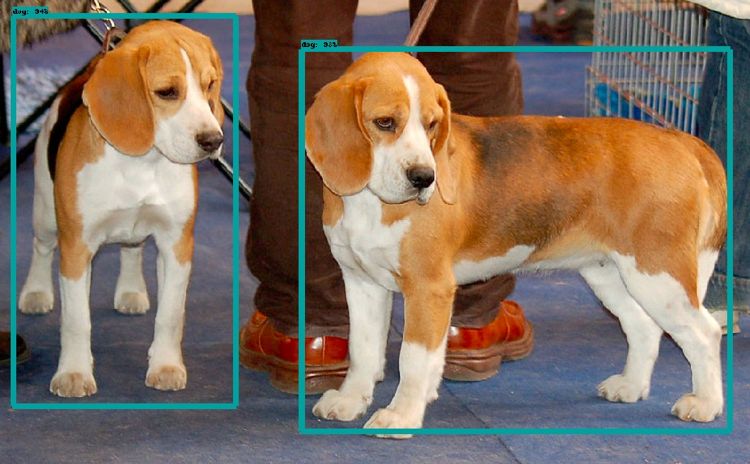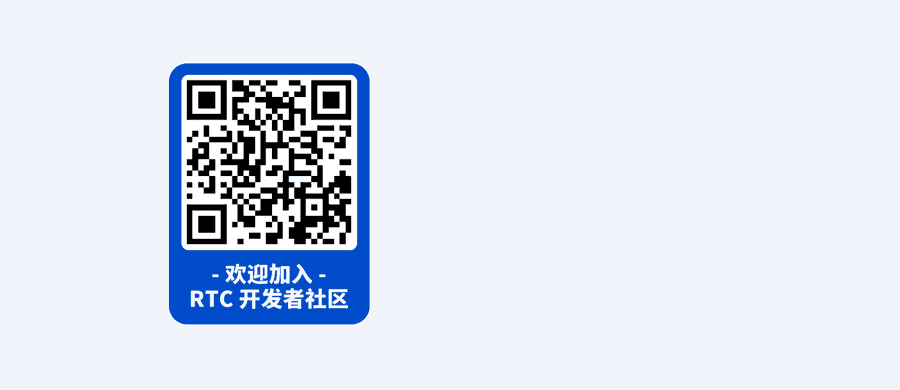
实时通话中成功识别左图中的人、椅子和显示器
TensorFlow图片物体识别
TensorFlow是Google的开源深度学习库,你可以使用这个框架以及Python编程语言,构建大量基于机器学习的应用程序。而且还有很多人把TensorFlow构建的应用程序或者其他框架,开源发布到GitHub上。所以我们今天主要基于Tensorflow学习下物体识别。
TensorFlow提供了用于检测图片或视频中所包含物体的API,详情可参考以下链接:
https://github.com/tensorflow/models/tree/master/research/object_detection
物体检测是检测图片中所出现的全部物体并且用矩形(Anchor Box)进行标注,物体的类别可以包括多种,例如人、车、动物、路标等。举个例子了解TensorFlow物体检测API的使用方法,这里使用预训练好的ssd_mobilenet_v1_coco模型(Single Shot MultiBox Detector),更多可用的物体检测模型可以参考这里:
https://github.com/tensorflow/models/blob/master/research/object_detection/g3doc/detection_model_zoo.md#coco-trained-models-coco-models
加载库
# -*- coding:
utf-8 -*-
import numpy as
np
import
tensorflow as tf
import
matplotlib.pyplot as plt
from PIL import
Image
from utils
import label_map_util
from utils
import visualization_utils as vis_util
定义一些常量
PATH_TO_CKPT = 'ssd_mobilenet_v1_coco_2017_11_17/frozen_inference_graph.pb'
PATH_TO_LABELS = 'ssd_mobilenet_v1_coco_2017_11_17/mscoco_label_map.pbtxt'
NUM_CLASSES = 90
加载预训练好的模型
detection_graph = tf.Graph()
with detection_graph.as_default():
od_graph_def = tf.GraphDef()
with tf.gfile.GFile(PATH_TO_CKPT, 'rb') as fid:
od_graph_def.ParseFromString(fid.read())
tf.import_graph_def(od_graph_def, name='')
加载分类标签数据
label_map = label_map_util.load_labelmap(PATH_TO_LABELS)
categories = label_map_util.convert_label_map_to_categories(label_map,max_num_classes=NUM_CLASSES, use_display_name=True)
category_index = label_map_util.create_category_index(categories)
一个将图片转为数组的辅助函数,以及测试图片路径
def load_image_into_numpy_array(image):
(im_width, im_height) = image.size
return np.array(image.getdata()).reshape((im_height, im_width, 3)).astype(np.uint8)
TEST_IMAGE_PATHS = ['test_images/image1.jpg', 'test_images/image2.jpg']
使用模型进行物体检测
with detection_graph.as_default():
with tf.Session(graph=detection_graph) as sess:
image_tensor = detection_graph.get_tensor_by_name('image_tensor:0')
detection_boxes = detection_graph.get_tensor_by_name('detection_boxes:0')
detection_scores = detection_graph.get_tensor_by_name('detection_scores:0')
detection_classes = detection_graph.get_tensor_by_name('detection_classes:0')
num_detections = detection_graph.get_tensor_by_name('num_detections:0')
for image_path in TEST_IMAGE_PATHS:
image = Image.open(image_path)
image_np = load_image_into_numpy_array(image)
image_np_expanded = np.expand_dims(image_np, axis=0)
(boxes, scores, classes, num) = sess.run(
[detection_boxes, detection_scores, detection_classes, num_detections],
feed_dict={image_tensor: image_np_expanded})
vis_util.visualize_boxes_and_labels_on_image_array(image_np, np.squeeze(boxes), np.squeeze(classes).astype(np.int32), np.squeeze(scores), category_index, use_normalized_coordinates=True, line_thickness=8)
plt.figure(figsize=[12, 8])
plt.imshow(image_np)
plt.show()
检测结果如下,第一张图片检测出了两只狗狗

实时音视频场景下TensorFlow物体识别
既然Tensorflow在静态图片的物体识别已经相对成熟,那在现实场景中,大量的实时音视频互动场景中,如何来做物体识别?我们现在基于声网实时视频的SDK,阐述如何做物体识别。
首先我们了解视频其实就是由一帧一帧的图像组合而成,所以从这个层面来说,视频中的目标识别就是从每一帧图像中做目标识别,从这个层面上讲,二者没有本质区别。在理解这个前提的基础上,我们就可以相对简单地做实时音视频场景下Tensorflow物体识别。
(1)读取Agora实时音视频,截取远端视频流的图片
def onRenderVideoFrame(uid, width, height, yStride,
uStride, vStride, yBuffer, uBuffer, vBuffer,
rotation, renderTimeMs, avsync_type):
# 用 isImageDetect 字段判断前一帧图像是否已完成识别,若完成置为True,执行以下代码,执行完置为false
if EventHandlerData.isImageDetect:
y_array = (ctypes.c_uint8 * (width * height)).from_address(yBuffer)
u_array = (ctypes.c_uint8 * ((width // 2) * (height // 2))).from_address(uBuffer)
v_array = (ctypes.c_uint8 * ((width // 2) * (height // 2))).from_address(vBuffer)
Y = np.frombuffer(y_array, dtype=np.uint8).reshape(height, width)
U = np.frombuffer(u_array, dtype=np.uint8).reshape((height // 2, width // 2)).repeat(2, axis=0).repeat(2, axis=1)
V = np.frombuffer(v_array, dtype=np.uint8).reshape((height // 2, width // 2)).repeat(2, axis=0).repeat(2, axis=1)
YUV = np.dstack((Y, U, V))[:height, :width, :]
# AI模型中大多数模型都是RGB格式训练,声网提供的视频回调数据源是YUV格式,我们做下格式转换
RGB = cv2.cvtColor(YUV, cv2.COLOR_YUV2RGB, 3)
EventHandlerData.image = Image.fromarray(RGB)
EventHandlerData.isImageDetect = False
(2)Tensorflow对截取图片进行物体识别
class objectDetectThread(QThread):
objectSignal = pyqtSignal(str)
def __init__(self):
super().__init__()
def run(self):
detection_graph = EventHandlerData.detection_graph
with detection_graph.as_default():
with tf.Session(graph=detection_graph) as sess:
(im_width, im_height) = EventHandlerData.image.size
image_np = np.array(EventHandlerData.image.getdata()).reshape((im_height, im_width, 3)).astype(np.uint8)
image_np_expanded = np.expand_dims(image_np, axis=0)
image_tensor = detection_graph.get_tensor_by_name('image_tensor:0')
boxes = detection_graph.get_tensor_by_name('detection_boxes:0')
scores = detection_graph.get_tensor_by_name('detection_scores:0')
classes = detection_graph.get_tensor_by_name('detection_classes:0')
num_detections = detection_graph.get_tensor_by_name('num_detections:0')
(boxes, scores, classes, num_detections) = sess.run(
[boxes, scores, classes, num_detections],
feed_dict={image_tensor: image_np_expanded})
objectText = []
# 如果识别概率大于百分之四十,我们就在文本框内显示所识别物体
for i, c in enumerate(classes[0]):
if scores[0][i] > 0.4
object = EventHandlerData.category_index[int(c)]['name']
if object not in objectText:
objectText.append(object)
else:
break
self.objectSignal.emit(', '.join(objectText))
EventHandlerData.detectReady = True
# 本帧图片识别完,isImageDetect 字段置为True,再次开始读取并转换Agora远端实时音视频
EventHandlerData.isImageDetect = True
我们已经将这个 Demo 以及Agora Python SDK 上传至 Github,大家可以直接下载使用。
Agora Python TensorFlow Demo:
https://github.com/AgoraIO-Community/Agora-Python-Tensorflow-Demo
Agora Python TensorFlow Demo编译指南:
下载
若是 Windows,复制.pyd and .dll文件到本项目文件夹根目录;若是IOS,复制.so文件到本文件夹根目录
下载TensorFlow 模型,然后把 object_detection 文件复制.到本文件夹根目录
安装 Protobuf,然后运行:protoc object_detection/protos/*.proto --python_out=.
从这里下载预先训练的模型(下载链接)
推荐使用 ssd_mobilenet_v1_coco 和 ssdlite_mobilenet_v2_coco,因为他们相对运行较快
提取 frozen graph,命令行运行:python extractGraph.py --model_file='FILE_NAME_OF_YOUR_MODEL'
最后,在 callBack.py 中修改 model name,在 demo.py 中修改Appid,然后运行即可
请注意,这个 Demo 仅作为演示使用,从获取到远端实时视频画面,到TensorFlow 进行识别处理,再到显示出识别效果,期间需要2至4 秒。不同网络情况、设备性能、算法模型,其识别的效率也不同。感兴趣的开发者可以尝试更换自己的算法模型,来优化识别的延时。
如果 Demo 运行中遇到问题,请在RTC 开发者社区中反馈、交流,或在 Github 提 issue。





















 3162
3162











 被折叠的 条评论
为什么被折叠?
被折叠的 条评论
为什么被折叠?








